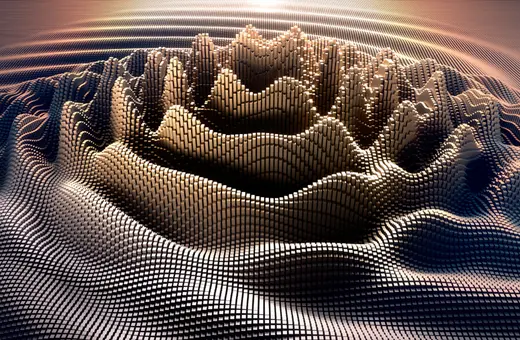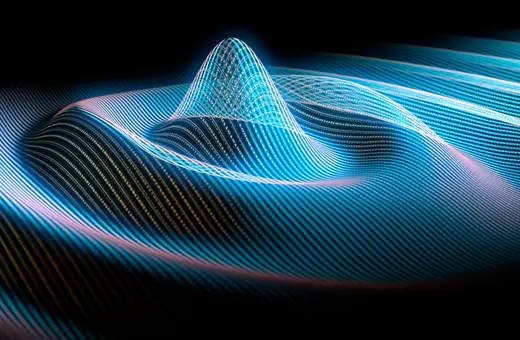Naturalism, the idea that there are no gods, spirits, or transcendent meanings, is the leading theory of our time. However, in this instalment of our idealism series, in partnership with the Essentia Foundation, Bruce Gordon argues that quantum mechanics not only beckons the end of naturalism, but also points towards the existence of a transcendent mind.
Naturalism remains a popular philosophy in the academic world. Its articulation varies, so let’s be clear what we mean. Theoretical physicist and philosopher Sean Carroll’s definition will suffice: “Naturalism is a philosophy according to which there is only one world—the natural world, which exhibits unbroken patterns (the laws of nature), and which we can learn about through hypothesis testing and observation. In particular, there is no supernatural world—no gods, no spirits, no transcendent meanings.” Advocates of naturalism tend to regard it as the inevitable accompaniment of a scientific mindset. It seems appropriate, therefore, to undermine it using the most fundamental of sciences: quantum physics.
Given its scientific pretensions, it’s appropriate that the doctrine that the natural world is self-contained, self-explanatory, and exceptionless is at least falsifiable. All we need is one counterexample to the idea that nature is a closed system of causes and effects, or one clear example of nature’s non-self-sufficiency, to be justified in rejecting naturalism, yet contrary evidence and considerations abound. Rather than trying to cover the gamut of cosmological fine-tuning, the origin of biological information, the origin and nature of consciousness, and the evidentiary value of near-death experiences, let’s focus on the implications of quantum physics as a less familiar aspect of naturalism’s failure.
___
Particle talk has pragmatic utility in relation to measurement results and macroscopic appearances, but no basis in unobserved (mind-independent) reality.
___
Quantum physics sets aside classical conceptions of motion and the interaction of bodies and introduces acts of measurement and probabilities for observational outcomes in an irreducible way not ameliorated by appealing to our limited knowledge. The state of a quantum system is described by an abstract mathematical object called a wave function that only specifies the probability that various observables will have a particular value when measured. These probabilities can’t all equal zero or one and measurement results are irreducibly probabilistic, so no sufficient physical reason exists for one outcome being observed rather than another. This absence of sufficient material causality in quantum physics has experimentally confirmed consequences that, as we shall see, put an end to naturalist conceits.
 SUGGESTED READING
Quantum mechanics makes no sense without the mind
By Shan Gao
SUGGESTED READING
Quantum mechanics makes no sense without the mind
By Shan Gao
The delayed-choice quantum eraser experiment provides a good example with which to start. This experiment measures which path a particle took after wave function interference inconsistent with particle behavior has already been created. The interference can be turned off or on by choosing whether or not to measure which way the particle went after the interference already exists. Choosing to look erases wave function interference and gives the system a particle history. The fact that we can make a causally disconnected choice whether wave or particle phenomena manifest in a quantum system demonstrates that no measurement-independent causally-connected substantial material reality exists at the microphysical level.





















Join the conversation